
While our hero, Nintendo DS, has had plenty of great games on its system, there’s one unifying feature that makes all those great games possible. It’s the dual screens, right? Yeah, it definitely must be. I guess that’s the award for this category! Everyone can go home now.
Hang on, it– we’ve just got a call here. Apparently Nintendo DS has got more features than just the dual screens– and in fact, not every game uses those screens the same way, either. (Who knew?) This week, we’ve highlighted plenty of great games, and while there’s a time and place for great games, thinking about such vaulted titles sometimes makes us lose track of what makes our beloved DS so great: innovation. From fusing two screens into one giant vertical in games like Sands of Destruction and Lunar: Dragon Song, to restlessly making sure your bottom screen shows evidence of your ADHD-inspired note-taking in Etrian Odyssey or The Legend of Zelda: Phantom Hourglass, game devs have made sure our DS does more than sport two screens. And in pretty much every instance, we were glad for it.
One Screen in Two
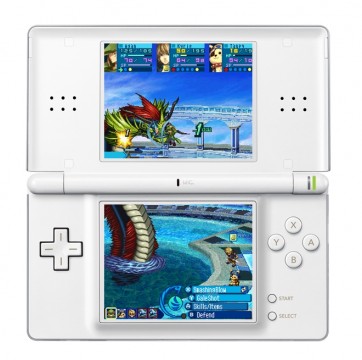
Sands of Destruction and Lunar: Dragon Song may not be the most well-known (or best-developed) games on the Nintendo DS, but they’ve got one thing in common: larger-than-life screens. That is, these two games– as well as plenty of other games, including the actually critically-acclaimed Sonic Colors for DS– decided to take full advantage of the dual screens not with maps, or statistics, but rather with one giant field of vision. Now, though letting you see a two-screen-tall boss may not be such a logistical advantage in turn-based role-playing games like Sands of Destruction, it certainly makes the DS system’s graphic prowess that much more obvious, as well as the talent of the artists that is so often showcased on the DS. And sometimes, as in Sonic Colors, showing you a two-screen-tall level not only lets you take in the sheer beauty of the game, but also lets you see one step ahead. Where’s the next enemy? Where will this corkscrew take me? Sure, you may not slow down enough to notice, but it’s certainly nice to have.
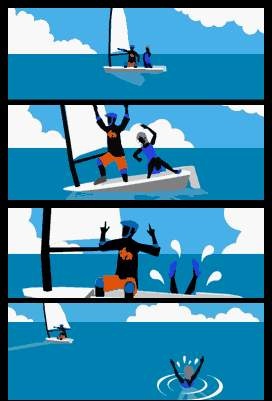
Blowing into the Mic
Feel the Magic: XY/XX is memorable for many different ways, so it’s easy to see why something like using the mic would get lost in the shuffle. But since Feel the Magic‘s usage of the mic to control a sailboat, many other games have used the DS system’s mic for a bunch of other reasons. Gamers will remember blowing into the mic to clear dust off objects in Trace Memory and Phoenix Wright: Ace Attorney (as well as a whole host of other point-and-click-style adventure games, many developed by Cing), or blow a few candles out in The Legend of Zelda: Phantom Hourglass. Now, though this could easily have been done with the press of a button on the Game Boy Advance, or, heck, even the Magnavox Odyssey (had technology allowed), the Nintendo DS was one of the first systems to go wholly into the immersion business. Blowing in the DS and watching a tiny sailboat move, or watching as the dust blew away from a telltale fingerprint, made players feel like they were actually doing something concrete in Videogameland. Unless, of course, their mic gave out.
The General Existence of Scribblenauts
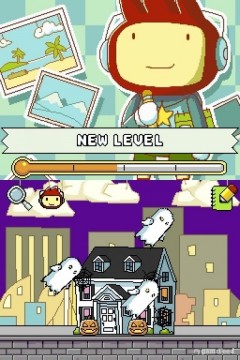
Maybe Scribblenauts doesn’t really count as a concept so much as it is a full-fledged video game, but considering the general premise of Scribblenauts— that is, write stuff on the touch screen and have them appear in the game– we thought it’d be okay to put this game on the concepts list. What we’re saying is, we really like making giant magical robot tyrannosaurs fight deformed transparent unicorns. It’s one of our favorite pastimes. And meanwhile, yes, we were just talking about immersion with the whole mic thing– but come to think of it, there’s nothing more immersive than having your own thoughts materialize onscreen. Thanks, Scribblenauts. This is why we’re friends.
Taking Notes In-Game
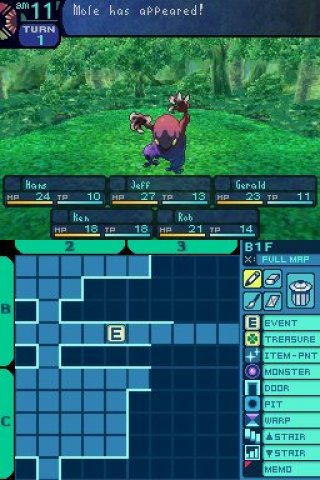 Remember Etrian Odyssey? No? What about Hotel Dusk: Room 215? How about The Legend of Zelda: Spirit Tracks? There’s one thing that ties all these games together, and that’s the essentially imperative use of the touch screen as a notebook. Since the time of the Nintendo Entertainment System, game developers have constantly encouraged gamers to use the manual that came with the system for memos and notes on how to play the game– seriously, look at the end of your nearest video game manual, and you’ll probably find a “Memos” section– and sometimes, it was necessary. It certainly was, for example, to write down passwords to saved games before battery saves came into the picture. While we may no longer have problems with password memorization, and while we do have the Internet for looking up maps and the like, games like Etrian Odyssey intentionally seek to recreate that very premise. Atlus and Cing both know that their games are convoluted sometimes to the point of absurdity, and yet they refuse to make it easy for you. In Etrian Odyssey, for example, you make your own maps– none are provided to you, making the free maps in modern Final Fantasy games seem like ten times their worth. And oddly enough, with every note you write down and every map you create, you feel like you’re actually doing something of worth. You’re earning these experience points, these chances to save the world, more than you ever have. And, strangely enough, it never feels like a job.
Remember Etrian Odyssey? No? What about Hotel Dusk: Room 215? How about The Legend of Zelda: Spirit Tracks? There’s one thing that ties all these games together, and that’s the essentially imperative use of the touch screen as a notebook. Since the time of the Nintendo Entertainment System, game developers have constantly encouraged gamers to use the manual that came with the system for memos and notes on how to play the game– seriously, look at the end of your nearest video game manual, and you’ll probably find a “Memos” section– and sometimes, it was necessary. It certainly was, for example, to write down passwords to saved games before battery saves came into the picture. While we may no longer have problems with password memorization, and while we do have the Internet for looking up maps and the like, games like Etrian Odyssey intentionally seek to recreate that very premise. Atlus and Cing both know that their games are convoluted sometimes to the point of absurdity, and yet they refuse to make it easy for you. In Etrian Odyssey, for example, you make your own maps– none are provided to you, making the free maps in modern Final Fantasy games seem like ten times their worth. And oddly enough, with every note you write down and every map you create, you feel like you’re actually doing something of worth. You’re earning these experience points, these chances to save the world, more than you ever have. And, strangely enough, it never feels like a job.
Using Your System as a Study Guide
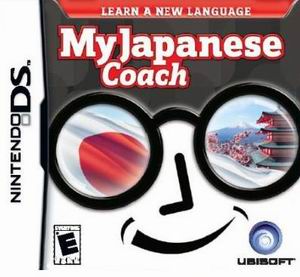 There’s a way to make learning, as they say, fun– and when it comes to the DS’ pile of learning games, there’s bound to be at least one game in there that both teaches and entertains at the same time. Ubisoft for one has released plenty of My ______ Coach games, claiming to teach a new language without the need to invest in Rosetta Stone. Meanwhile, Nintendo’s Cooking Guide (or even 100 Classic Books, if we’re going that far) is meant to be placed on the counter while the dutiful gamer cooks up some Nintendo-approved recipes. And let’s not forget Brain Age: Train Your Brain in Minutes a Day!— sure, it’s not exactly studying, and yes, the effects are debatable, but exercising your brain’s bound to be healthier than not at all. More than any other Nintendo system before it, DS has managed to attract a whole host of edutainment games, and some of them actually prove quite useful— there’s an especially large market for English training games in Japan, where games like Little Charo Travels are incredibly cute and actually pretty educational at the same time. Heck, you could probably even get some Japanese practice out of them.
There’s a way to make learning, as they say, fun– and when it comes to the DS’ pile of learning games, there’s bound to be at least one game in there that both teaches and entertains at the same time. Ubisoft for one has released plenty of My ______ Coach games, claiming to teach a new language without the need to invest in Rosetta Stone. Meanwhile, Nintendo’s Cooking Guide (or even 100 Classic Books, if we’re going that far) is meant to be placed on the counter while the dutiful gamer cooks up some Nintendo-approved recipes. And let’s not forget Brain Age: Train Your Brain in Minutes a Day!— sure, it’s not exactly studying, and yes, the effects are debatable, but exercising your brain’s bound to be healthier than not at all. More than any other Nintendo system before it, DS has managed to attract a whole host of edutainment games, and some of them actually prove quite useful— there’s an especially large market for English training games in Japan, where games like Little Charo Travels are incredibly cute and actually pretty educational at the same time. Heck, you could probably even get some Japanese practice out of them.
Did we skip the best game concept ever? Think we didn’t give Cooking Mama her due? Let us know in the comments! We listen. Really.




 ShareThis
ShareThis






